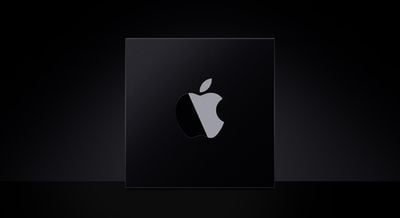Apple Chip Supplier Preparing to Begin Production of 2nm Chips as Early as 2025
Apple could adopt the 2nm process for its iPhone and Mac chips as early as 2025 as the company's main chip supplier, TSMC, has set in motion a plan to produce that process in the early parts of that year, DigiTimes reports.

All of Apple's latest chips feature the 5nm process, including the A15 Bionic in the iPhone 13 series and the entire M1 Apple silicon line. According to a new DigiTimes report today, TSMC will begin mass production of 3nm chips later this year with 2nm following in 2025 with Apple and Intel being among the first to use the newer technology.
TSMC has set a timetable to move its 2nm GAA process to production in 2025 while commercializing its 3nm FInFET process with improved yield rates in the second half of 2022, with Apple and Intel among the first clients to adopt both nodes, further consolidating its dominance in the advanced foundry sector, according to industry sources.
A report from last year claimed that the next iPad Pro, expected to be announced later this year, will feature a 3nm process. The current iPad Pro features the M1 chip and the 2022 version is expected to include Apple's all-new "M2" chip. The 3nm process technology features performance improvements of up to 15% while being at least 25% less battery-hungry, according to TSMC.
Popular Stories
Apple's iPhone 17 Pro and iPhone 17 Pro Max models will feature a number of significant display, thermal, and battery improvements, according to new late-stage rumors.
According to the Weibo leaker known as "Instant Digital," the iPhone 17 Pro models will feature displays with higher brightness, making it more suitable for use in direct sunlight for prolonged periods. The iPhone 16 Pro and...
Apple is expected to unveil the iPhone 17 series on Tuesday, September 9, and last-minute rumors about the devices continue to surface.
The latest info comes from a leaker known as Majin Bu, who has shared alleged images of Apple's Clear Case for the iPhone 17 Pro and Pro Max, or at least replicas.
Image Credit: @MajinBuOfficial
The images show three alleged changes compared to Apple's iP...
Apple will launch its new iPhone 17 series this month, and the iPhone 17 Pro models are expected to get a new design for the rear casing and the camera area. But more significant changes to the lineup are not expected until next year, when the iPhone 18 models arrive.
If you're thinking of trading in your iPhone for this year's latest, consider the following features rumored to be coming to...
Just one week before Apple is expected to unveil the iPhone 17 series, an analyst has shared new price estimates for the devices.
Here are J.P. Morgan analyst Samik Chatterjee's price estimates for the iPhone 17 series in the United States, according to 9to5Mac:
Model
Starting Price
Model
Starting Price
Change
iPhone 16
$799
iPhone 17
...
An iPhone 17 announcement is a dead cert for September 2025 – Apple has already sent out invites for an "Awe dropping" event on Tuesday, September 9 at the Apple Park campus in Cupertino, California. The timing follows Apple's trend of introducing new iPhone models annually in the fall.
At the event, Apple is expected to unveil its new-generation iPhone 17, an all-new ultra-thin iPhone 17...
Apple is preparing to release iOS 18.7 for compatible iPhone models, according to evidence of the update in the MacRumors visitor logs.
We expect iOS 18.7 to be released in September, alongside iOS 26. The update will likely include fixes for security vulnerabilities, but little else.
iOS 18.7 will be one of the final updates ever released for the iPhone XS, iPhone XS Max, and iPhone XR,...
A new survey has found that nearly seven in ten iPhone owners in the United States plan to upgrade to an iPhone 17 model, signaling strong demand ahead of Apple's expected unveiling of the devices at its September 9 keynote.
Smartphone price comparison platform SellCell surveyed over 2,000 U.S.-based iPhone users in August to assess upgrade interest and brand loyalty before Apple's event....
![]()


















